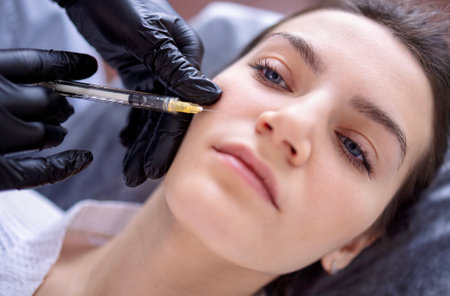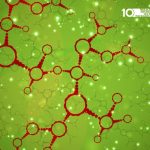1. Understanding Dark Circles and Puffy Eyes
Dark circles and puffy eyes are common concerns that affect many people, regardless of age or lifestyle. While they may seem similar, these two issues have different causes and characteristics. Understanding the differences between them can help in finding the right solutions.
What Are Dark Circles?
Dark circles refer to the darker pigmentation or shadowing that appears under the eyes. They can give a tired or aged appearance, even when you’re well-rested. Several factors contribute to dark circles, including genetics, skin thinning, and poor circulation.
What Are Puffy Eyes?
Puffy eyes occur when there is swelling or fluid retention around the eye area. This can make the eyes look swollen or baggy. Unlike dark circles, puffy eyes are more related to temporary conditions such as lack of sleep, high salt intake, allergies, or aging.
Key Differences Between Dark Circles and Puffy Eyes
| Feature | Dark Circles | Puffy Eyes |
|---|---|---|
| Appearance | Darkened skin under the eyes | Swelling or puffiness around the eyes |
| Main Causes | Pigmentation, thin skin, genetics, poor circulation | Fluid retention, allergies, lack of sleep, aging |
| Common Triggers | Lack of sleep, stress, dehydration | Diets high in salt, seasonal allergies |
| Treatment Approaches | Brightening creams, lifestyle changes, cosmetic procedures | Cooling treatments, reducing salt intake, better sleep habits |
Why Do These Issues Occur?
The delicate skin around the eyes is thinner than other parts of the body, making it more susceptible to discoloration and swelling. Several factors contribute to both dark circles and puffy eyes:
- Aging: As we age, collagen production decreases, causing skin to become thinner and veins more visible.
- Lifestyle Habits: Poor diet, alcohol consumption, smoking, and lack of sleep can all worsen these conditions.
- Allergies: Allergic reactions can cause inflammation and fluid buildup under the eyes.
- Genetics: Some people are naturally predisposed to having darker pigmentation or puffiness in the eye area.
The Impact on Appearance and Confidence
No matter their cause, dark circles and puffy eyes can make a person look tired or older than they actually are. Many people seek ways to reduce these effects for a fresher and more youthful appearance. In the following sections, we’ll explore what contributes to these concerns in greater detail and how they can be effectively managed.
2. Common Causes of Dark Circles
Dark circles under the eyes can be frustrating, but understanding their causes can help you find the right solutions. Several factors contribute to their appearance, including genetics, aging, lifestyle choices, and skin pigmentation.
Genetics: A Major Factor
If your parents have dark circles, chances are you might develop them too. Genetics play a significant role in skin structure and pigmentation, which can make dark circles more noticeable. Some people naturally have thinner skin under their eyes, making blood vessels more visible.
Aging and Skin Changes
As we age, our skin loses collagen and elasticity, causing it to become thinner. This makes the blood vessels under the eyes more prominent, leading to a darker appearance. Additionally, fat loss in the under-eye area can create hollows that cast shadows, making dark circles look worse.
Lifestyle Habits That Worsen Dark Circles
Your daily habits can also contribute to dark circles. Factors such as lack of sleep, excessive screen time, poor diet, and dehydration can all make them appear darker and puffier. Here’s a quick breakdown:
| Lifestyle Habit | How It Contributes to Dark Circles |
|---|---|
| Lack of Sleep | Pale skin makes blood vessels more visible |
| Poor Diet | Nutrient deficiencies can weaken skin health |
| Dehydration | Makes skin look dull and sunken |
| Excessive Screen Time | Eye strain can cause blood vessel dilation |
The Role of Skin Pigmentation
Darker skin tones are more prone to hyperpigmentation due to increased melanin production. This means that even minor irritation or rubbing of the eyes can lead to persistent dark circles. Sun exposure can also worsen pigmentation-related dark circles over time.
![]()
3. Why Do Puffy Eyes Happen?
Puffy eyes can be frustrating, especially when they make you look tired or older than you feel. Understanding what causes under-eye puffiness can help you take steps to prevent and reduce it. Several factors contribute to puffy eyes, including fluid retention, allergies, lack of sleep, and dietary choices.
Common Causes of Puffy Eyes
Puffiness around the eyes often results from lifestyle habits, environmental factors, and even genetics. Below are some of the most common triggers:
Fluid Retention
Your body naturally retains fluids due to various reasons, leading to swelling under the eyes. This can happen due to excessive salt intake, dehydration, or hormonal changes.
Allergies
Seasonal allergies or sensitivities to certain products can cause inflammation and fluid buildup around the eyes. Common allergens include pollen, dust, pet dander, and skincare ingredients.
Lack of Sleep
Poor sleep quality or not getting enough rest can lead to poor circulation and fluid accumulation under the eyes, making them appear swollen.
Dietary Choices
Your diet plays a significant role in eye puffiness. Consuming too much sodium, alcohol, or processed foods can lead to water retention and bloating in the under-eye area.
Comparing Key Triggers of Puffy Eyes
| Cause | Description | How to Prevent It |
|---|---|---|
| Fluid Retention | Buildup of excess fluid under the eyes due to high sodium intake or dehydration. | Drink plenty of water and reduce salty foods in your diet. |
| Allergies | Irritation from allergens causing swelling and inflammation around the eyes. | Avoid known allergens and use antihistamines if needed. |
| Lack of Sleep | Poor rest leading to sluggish circulation and fluid accumulation. | Aim for 7-9 hours of quality sleep each night. |
| Poor Diet | Sodium-heavy or processed foods causing bloating and water retention. | Eat a balanced diet with fresh fruits and vegetables. |
4. Prevention and Lifestyle Changes
Dark circles and puffy eyes can be frustrating, but making small lifestyle changes can help minimize their appearance. By adjusting your sleep habits, staying hydrated, eating a balanced diet, and following a proper skincare routine, you can keep your under-eye area looking fresh and healthy.
Improve Your Sleep Habits
Lack of sleep or poor-quality sleep can cause fluid retention and dark circles. Here are some simple tips to improve your sleep:
- Get Enough Sleep: Aim for 7-9 hours of quality sleep each night.
- Sleep with Your Head Elevated: Use an extra pillow to prevent fluid buildup around the eyes.
- Maintain a Consistent Schedule: Go to bed and wake up at the same time every day.
- Avoid Screens Before Bed: Reduce blue light exposure from phones and laptops before sleeping.
Stay Hydrated
Dehydration can make dark circles more noticeable and lead to puffiness. Keep your body hydrated with these simple steps:
- Drink Plenty of Water: Aim for at least 8 glasses (64 oz) of water per day.
- Limit Caffeine & Alcohol: These can dehydrate your body and make under-eye concerns worse.
- Add Hydrating Foods: Eat foods rich in water content like cucumbers, watermelon, and oranges.
Eat a Balanced Diet
Your diet plays a major role in skin health. Certain nutrients help reduce puffiness and dark circles:
| Nutrient | Benefits | Best Sources |
|---|---|---|
| Vitamin C | Boosts collagen production and brightens skin | Citrus fruits, bell peppers, strawberries |
| Vitamin K | Reduces dark circles by improving blood circulation | Kale, spinach, broccoli |
| Iron | Prevents under-eye darkness caused by anemia | Red meat, lentils, tofu |
| Omega-3 Fatty Acids | Reduces inflammation that leads to puffiness | Salmon, walnuts, flaxseeds |
Follow a Proper Skincare Routine
A good skincare routine can significantly reduce dark circles and puffiness over time. Consider these tips:
Use a Gentle Eye Cream
- Caffeine-Based Creams: Help constrict blood vessels and reduce swelling.
- Retinol Creams: Promote collagen production to thicken delicate under-eye skin.
- Hydrating Ingredients: Look for hyaluronic acid or aloe vera to keep the skin moisturized.
Sunscreen is Essential
The suns UV rays can worsen pigmentation around the eyes. Always apply sunscreen with SPF 30 or higher, even on cloudy days.
Cucumber Slices & Cold Compresses
If you wake up with puffiness, try placing chilled cucumber slices or a cold compress over your eyes for a few minutes to reduce swelling.
By making these small adjustments in your daily routine, you can effectively reduce the appearance of dark circles and puffy eyes while keeping your skin healthy and refreshed.
5. Medical and Cosmetic Treatments
For those struggling with persistent dark circles and puffy eyes, professional treatments can offer effective solutions. Depending on the underlying cause, medical and cosmetic procedures can help reduce discoloration, improve skin texture, and minimize puffiness.
Dermal Fillers
Dermal fillers, typically made of hyaluronic acid, are injected into the under-eye area to restore lost volume and smooth out hollow areas that contribute to dark circles. This treatment is particularly effective for individuals with deep tear troughs.
Laser Therapy
Laser treatments target pigmentation and stimulate collagen production to improve skin elasticity. Different types of laser therapy are available depending on the cause of dark circles:
| Type of Laser | Purpose |
|---|---|
| Fractional Laser | Stimulates collagen production to tighten skin |
| Pulsed-Dye Laser | Reduces vascular-related dark circles by targeting blood vessels |
| Q-Switched Laser | Treats hyperpigmentation by breaking down excess melanin |
Chemical Peels
Chemical peels containing ingredients like glycolic acid or lactic acid help exfoliate the skin, lighten pigmentation, and improve overall skin tone. These treatments work best for individuals with pigmentation-related dark circles.
Topical Solutions
Certain medical-grade creams and serums contain active ingredients that target under-eye concerns:
| Ingredient | Benefit |
|---|---|
| Retinol | Boosts collagen production and reduces fine lines |
| Caffeine | Diminishes puffiness by constricting blood vessels |
| Kojic Acid & Vitamin C | Brightens skin and reduces pigmentation |
| Hyaluronic Acid | Keeps the under-eye area hydrated and plump |
Surgical Options
If non-invasive treatments do not provide sufficient results, surgical procedures like lower blepharoplasty may be an option. This procedure removes excess fat or tightens the skin under the eyes to eliminate puffiness and sagging.
Selecting the Right Treatment
The best treatment option depends on individual concerns and underlying causes. Consulting a dermatologist or cosmetic specialist can help determine which approach is most suitable for achieving long-lasting improvements.


